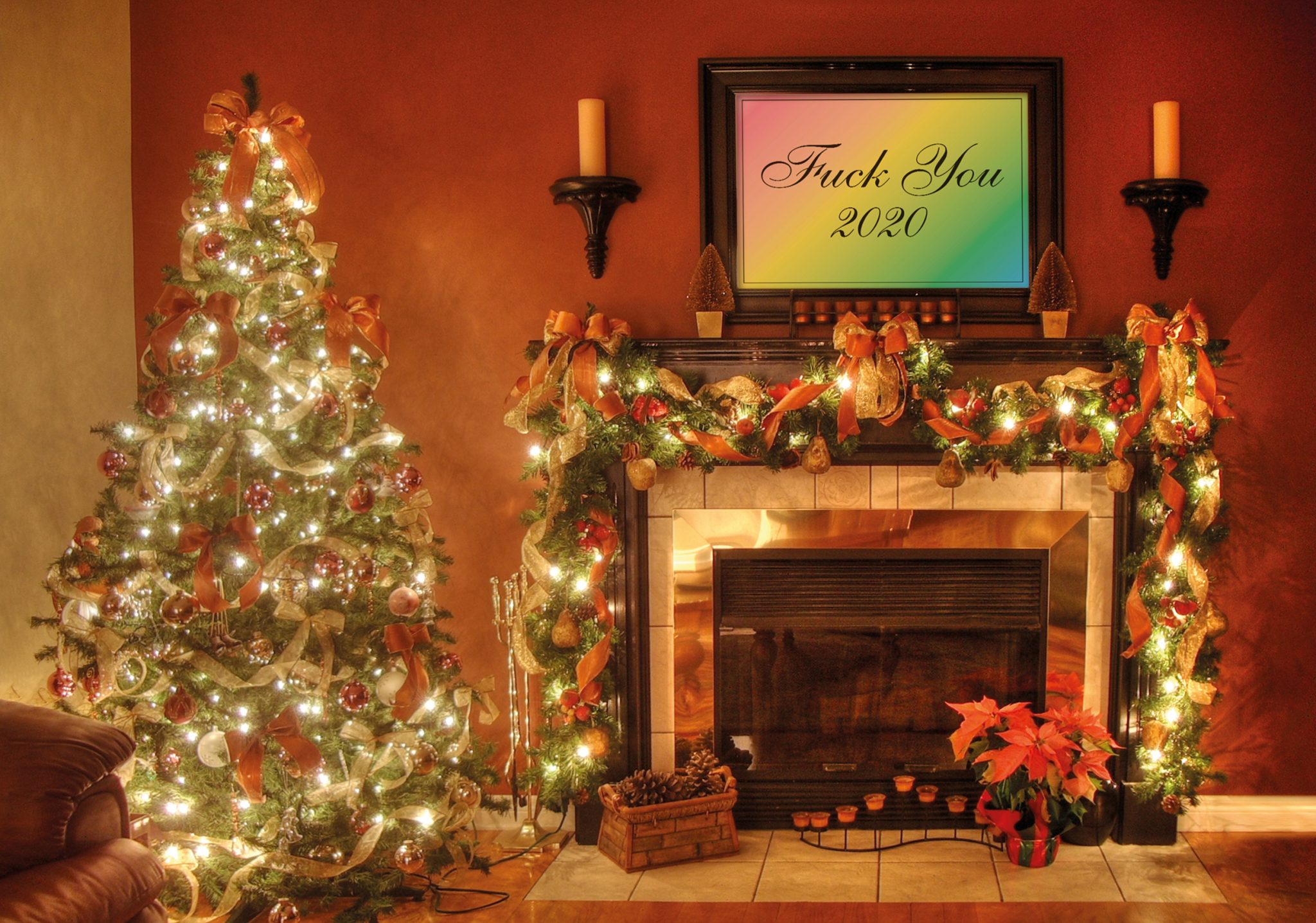A collective dropping of cool, reserve and power games
At this special time of year, spare a thought for those less fortunate than yourself – such as the gallery employees tasked with trawling image archives to find something suitable for the Christmas card. This perennial communiqué, sent out to artists, collectors, curators and sometimes even critics who have spent the past months scribbling bitchy columns dismissing the art scenes of entire cities, should ideally present the artwork of someone connected to the gallery and feel in some way ‘seasonal’. But Christmas, however you slice it, is void of the qualities with which contemporary art likes to associate itself (except maybe commercialism, lol); and nor do most galleries have an artist who handily specialises in deconstructing Yuletide, or in making wry photorealist paintings of fig puddings. Still, you have to let your constituency know you’re thinking of them, and the result in recent times has been cards (or e-cards) that grudgingly feature a red and green abstraction, or a tangled sculptural assemblage with a single reindeer horn poking out of it, or a crepuscular black-and-white photograph of a snowy landscape that, if you read the credit, turns out to be the site of a seventeenth-century massacre.
2020, however, has been a Year Like No Other – the artworld’s own designated Santa Claus, John Baldessari, died at the beginning of January, though it feels like it was about seven years ago – and its aftershocks are even felt here, in Chrimbo-card corner. Today I got a seasonal salut from a French commercial gallery. Kicking off with Jeremy Deller’s fundraising edition Fuck You 2020, it then launched into a slideshow of the venue’s recent exhibitions; but more typical was another one from a usually stentorian Berlin institution, featuring a cute, wobbly animation of an actual Christmas tree, albeit festooned not with winking lights but blinking eyes. Here’s one from a German gallery featuring, wait, yes, that’s definitely a painting of mistletoe; here’s another from a London gallery with a trio of cheery candles. This one has what looks like a reproduction of a vintage greetings card on it, featuring a smiling Christmas pudding with wine bottles for legs. Sure, there were holdouts – one gallery apparently thinks that nothing says festive quite like an amorphous brown watercolour by Antony Gormley – but they were outliers. Many of the atypically cheery missives also included texts thanking the galleries’ artists and audiences for their support, typically studded with exclamation marks; few of them dodged sincere sentiment, or the personal touch. One need not be Roland Barthes to parse the semiotics here. Gallery owners, quite understandably, are too fucking frazzled right now to remain suavely above it all.
This raises a thought, of sorts, for the future. Art, for decades now, has defaulted to high seriousness: cast your mind back, if you can, to the last Documenta, a lengthy trawl through the byways of human cruelty and misery around the world and down the centuries. Nor was the last Venice Biennale, if I remember rightly, a delirious banquet of uplift. The final show I saw this year revolved around ecological collapse and the slim possibility of doing something cleverly counteractive with urban waste. The one before that was a profound, sombre critique of the narrow tastes and herd mentality of collectors expressed in the form of a bunch of minimal paintings that all looked alike. Well, OK, maybe not; but the implicit assumption when one walks in a gallery nowadays is that cleverly articulated and thoughtfully wrought downers await within. It’s why a painting of mistletoe or a cartoon Douglas fir, hokey and lightweight though it might be, comes as a tangible surprise: it’s unguarded.
It’s worth remembering that contemporary art has not always been about the articulate delivery of a sobering sentiment, though since the 1990s it mostly has. Artists who traffic in visual pleasure – even in the evocation of happiness – in our times tend to precede ‘our times’: Bridget Riley, for example, or David Hockney or Mary Heilmann. One may say, particularly when reviewing the last 12 months, that there’s precious little to feel positive about. But then again, perhaps vaccine developments and election results, the illusory sense that decisive change coincides with the passing of a calendar year, and the bare fact of still being alive at the end of 2020 contributed to the punch-drunk goodwill of this year’s messages from the gallery sector, and to a collective dropping of cool, reserve and power games. Something cracked open, and with it, access to an emotional territory, even a countenancing of sentiment’s consolatory value, that the contemporary art ecosystem tends to disdain. It might not outlast Christmas or spill into artistic practice, but maybe it should. Ambitious art that isn’t ‘feelgood’ but nevertheless makes a viewer feel better in trying times, even if momentarily, nowadays presents something of an open goal.
